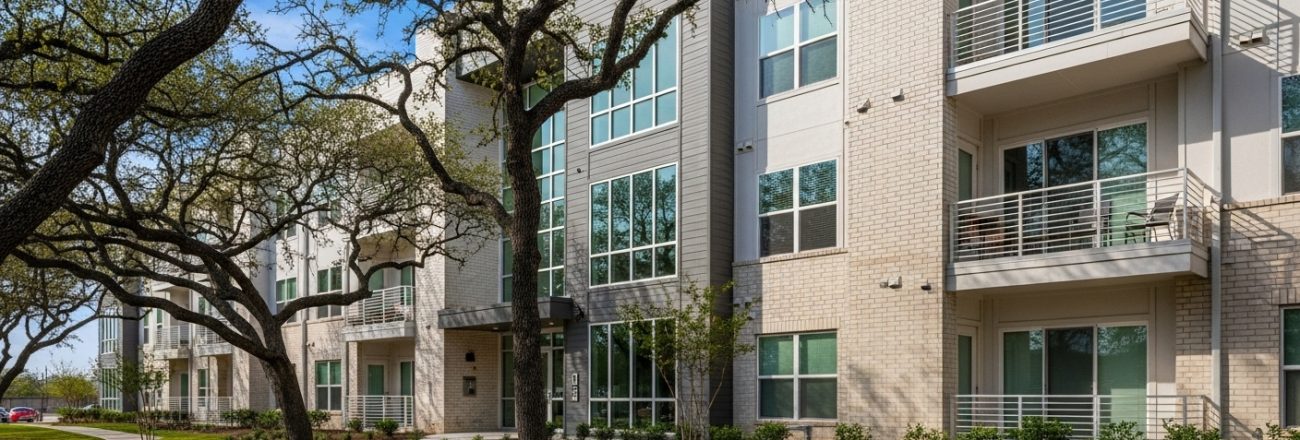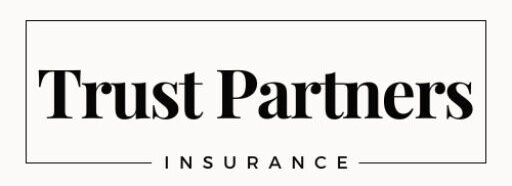1. Introduction
2. Evaluate Your Coverage
3. Implement Risk Management Strategies
4. Consider Policy Bundling
5. Adjust Your Deductibles
6. Manage Your Claims History
7. Increase Energy Efficiency
8. Optimize Tenant Management Practices
9. Seek Professional Consultation
10. How Our Company Can Help

1. Introduction
🏢 Understanding Insurance Premium Challenges
Apartment building insurance premiums in North Texas have been on the rise due to factors like increased property values and higher incidence of natural disasters. Building owners and managers often find themselves grappling with these rising costs while striving to maintain comprehensive coverage. Understanding the specific elements that influence premium rates is the first step towards effective cost management.
💡 The Importance of Maintaining Coverage
While cutting costs is a priority, it’s crucial not to compromise on coverage. Adequate insurance not only protects your investment but also ensures compliance with legal and financial obligations. Striking a balance between cost and coverage requires strategic planning and informed decision-making.

2. Evaluate Your Coverage
🔍 Conduct an Insurance Audit
An insurance audit involves a thorough review of your current policies to identify areas where you might be over-insured or under-insured. This process helps in pinpointing unnecessary coverages that can be adjusted or eliminated. For instance, if your building is equipped with advanced fire suppression systems, you may negotiate for reduced fire insurance premiums.
📄 Understand Your Building’s Risk Profile
Every building has a unique risk profile influenced by factors such as location, age, and structural integrity. In North Texas, proximity to flood-prone areas or areas with high crime rates can significantly affect insurance costs. Understanding your building’s specific risks enables you to tailor your insurance package to cover only essential risks, potentially lowering premiums.
🔄 Reassess Additional Coverage Options
Additional coverage options like earthquake or cyber insurance may not be necessary for all apartment buildings. Regularly reassessing these options based on current risks and building improvements can help in eliminating unnecessary coverage, thereby reducing premiums. For example, if your building has upgraded to a robust IT security system, you might negotiate a reduction in cyber insurance costs.

3. Implement Risk Management Strategies
🛠️ Improve Building Security
Enhancing building security can lead to lower insurance premiums by reducing the likelihood of theft and vandalism. Installing surveillance cameras, security lighting, and access control systems can deter criminal activity, making your property less risky to insure. Insurance companies often offer discounts for well-secured properties, recognizing the proactive approach to risk management.
🔥 Fire Prevention Measures
Implementing and maintaining fire safety measures is crucial for reducing insurance costs. Regularly servicing fire alarms, installing sprinkler systems, and conducting fire drills can demonstrate to insurers your commitment to minimizing fire-related risks. North Texas building owners have reported up to 20% premium reductions by highlighting such preventive measures.
🌧️ Address Weather-Related Risks
North Texas is susceptible to severe weather, including storms and hail. Reinforcing roofs, installing impact-resistant windows, and maintaining drainage systems can mitigate weather-related damage. By actively managing these risks, you can negotiate better terms with insurers. Some insurers offer premium discounts for buildings certified as weather-resistant.

4. Consider Policy Bundling
📦 Bundling Multiple Policies
Bundling refers to purchasing multiple insurance policies from the same provider, which often results in premium discounts. Building owners can bundle property insurance with liability or umbrella insurance to gain cost benefits. Insurers prefer clients with multiple policies, as it represents a larger business opportunity and a longer-term relationship.
🤝 Choose the Right Insurance Provider
Selecting an insurance provider that understands the local market dynamics in North Texas can lead to better bundling options and discounts. Providers familiar with regional risks can offer tailored solutions that align with your risk profile and coverage needs, often at a reduced rate.
📑 Review Bundling Discounts Annually
Insurance markets are dynamic, with bundling discounts varying yearly based on market conditions and internal company strategies. Regularly reviewing and renegotiating your bundled policies ensures you get the most competitive rates. Keep abreast of industry trends and changes in your own risk profile to maximize savings.

5. Adjust Your Deductibles
📈 Evaluate Your Current Deductible Levels
A higher deductible typically results in lower premiums, as it represents a greater risk absorbed by the policyholder. Assess your building’s financial capacity to handle larger out-of-pocket expenses before claims. For financially stable properties, increasing deductibles can significantly reduce premiums without risking operational cash flow.
💵 Strategic Deductible Changes
Strategically adjusting deductibles based on risk assessment can lead to savings. For example, if the likelihood of a specific risk event, such as minor water damage, is low, increasing the deductible for that coverage can reduce premiums. Consider balancing deductibles across different coverage areas to optimize cost savings while maintaining manageable risk levels.
🔄 Regularly Review Deductible Options
Insurance needs and financial capabilities change over time, necessitating regular reviews of deductible options. Adjust deductibles in response to significant changes like major renovations, improvements in building infrastructure, or shifts in financial strategy. These periodic evaluations ensure that you continually optimize your insurance costs.

6. Manage Your Claims History
📉 Understand the Impact of Claims on Premiums
Frequent claims can lead to higher premiums as they pose a greater risk to insurers. Understanding how claims affect your insurance profile is crucial in planning future strategies. Implementing effective management practices to reduce claims frequency can directly benefit your bottom line by keeping premiums lower.
🔧 Implement Preventive Maintenance
Regular maintenance prevents minor issues from escalating into major claims. For instance, routine HVAC inspections and plumbing maintenance can prevent costly claims related to water damage and climate control failures. By investing in preventive measures, apartment managers can maintain a cleaner claims history, which insurers often reward with lower premiums.
🛡️ Develop a Claims Management Strategy
Having a clear strategy for managing claims includes quick response protocols and effective communication with your insurer. This not only speeds up the resolution process but also aids in minimizing the financial impact of each claim. A well-managed claims process can positively influence future premium negotiations as it demonstrates operational efficiency and risk control.

7. Increase Energy Efficiency
💡 Explore Green Building Initiatives
Investing in energy-efficient technologies and sustainable practices can lower utility costs and reduce insurance premiums. Initiatives like installing solar panels or energy-efficient HVAC systems can qualify for green building discounts from insurers. These improvements not only attract environmentally conscious tenants but also demonstrate a commitment to long-term sustainability, appealing to insurers.
🌱 Certifications and Energy Audits
Obtaining certifications like LEED or conducting regular energy audits can make your property more attractive to insurers. These audits highlight improvements and efficiencies, allowing you to negotiate lower premiums. Insurers prefer to insure buildings that demonstrate a reduced environmental impact, offering potential savings as a reward for sustainability efforts.
🔌 Implement Smart Building Technologies
Incorporating smart technologies that monitor and manage energy use can lead to reduced operational costs and lower premiums. Smart thermostats, automated lighting systems, and energy management software provide data-driven insights, helping in optimizing energy use and demonstrating to insurers a proactive approach to building management.

8. Optimize Tenant Management Practices
👥 Screen Tenants Thoroughly
Tenant behavior significantly impacts the risk profile of an apartment building. Thorough screening processes, including background and credit checks, reduce the likelihood of disruptions and damages. Well-vetted tenants help maintain a stable environment, which insurers recognize by offering lower premiums. Establish clear tenant guidelines to minimize risk-related incidents.
📚 Educate Tenants on Safety Protocols
Educating tenants about safety protocols and emergency procedures reduces the risk of accidents and incidents that could lead to insurance claims. Regular safety training and distribution of emergency response guides foster a culture of vigilance and responsibility among tenants. This proactive stance can lead to favorable insurance terms.
🛠️ Enhance Tenant Communication
Open lines of communication between management and tenants facilitate quick resolution of potential issues before they escalate. Regular updates on building policies and maintenance schedules keep tenants informed and engaged. Effective communication demonstrates to insurers an organized and well-managed property, potentially lowering risk perceptions and insurance costs.

9. Seek Professional Consultation
👨💼 Engage with Insurance Experts
Consulting with insurance professionals who specialize in apartment building policies can provide insights into cost-saving strategies while ensuring adequate coverage. These experts understand the nuances of the North Texas market and can tailor recommendations to fit specific building needs, often identifying savings opportunities that might be overlooked.
🏗️ Collaborate with Risk Management Consultants
Risk management consultants offer specialized services to assess and mitigate risks unique to apartment buildings. Their expertise in identifying vulnerabilities and implementing preventive strategies can enhance a property’s safety profile, leading to lower insurance premiums. Collaboration with these experts ensures comprehensive risk reduction strategies are in place.
📈 Leverage Financial Advisors
Financial advisors can help balance the financial aspects of insurance with overall business strategy. They provide guidance on deductible levels, premium financing, and cost-benefit analysis of different coverage options. This holistic approach ensures that insurance decisions align with long-term financial goals, optimizing both protection and cost-efficiency.

10. How Our Company Can Help
🤝 Tailored Insurance Solutions
Our company specializes in providing customized insurance solutions that cater specifically to apartment building owners and managers in North Texas. We assess your unique needs and risks to develop a comprehensive insurance package that offers maximum coverage at competitive rates. Our personalized service ensures you receive the best protection without unnecessary costs.
💬 Expert Advice and Support
With a team of experienced professionals, we offer ongoing advice and support to help you navigate the complexities of insurance management. Whether it’s adjusting coverage, managing claims, or implementing risk reduction strategies, our experts are available to assist you every step of the way, ensuring peace of mind and financial security.
📉 Commitment to Cost Savings
We are committed to identifying cost-saving opportunities without compromising on the quality of coverage. By leveraging our industry knowledge and relationships with top insurance providers, we secure the most favorable terms for our clients, helping you achieve your financial objectives while maintaining robust protection for your property.
